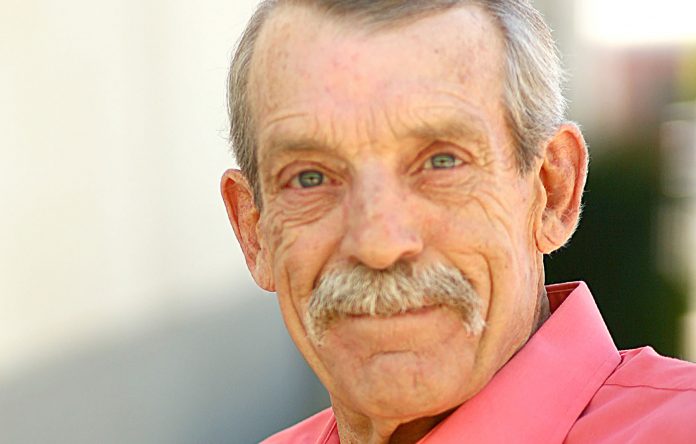In a rare case of a column running too long, I offer this story as a two-parter…
One day I came home from school, it was 1964 and I was in the sixth grade in Greenfield Elementary School, and my father handed me a book and said, “Read this, it’s about America.” The name of the book was “Travels with Charley: In Search of America” by John Steinbeck. Well, by the sixth grade I certainly knew who Steinbeck was, as I had read “Of Mice and Men” and “The Red Pony” and probably a couple other short stories he had written, and of course I knew he was a Salinas native.
I knew my father liked stories about travel in America because he had a book written by Ernie Pyle, who traveled around America in the mid-1930s and wrote about people he met along the way, and a book of compilation of newspaper articles written by humorist Will Rogers as he traveled about America. I found both books fascinating if for no other reason than I liked the idea of getting paid to write about so many different aspects of American life gleaned from the vast diversity of people who make up these United States.
So, trusting my father’s wisdom on the subject, I read the book, which was a narrative of Steinbeck’s 1960 travels in a GMC pickup with custom camper (which he named Roccinante after Don Quixote’s steed) on a 10,000-mile circumnavigation of the country. I enjoyed the book immensely, but a few months later I came to really appreciate the book because my family took a driving vacation up through Montana then down to southern Iowa, and one of the places we visited was the Little Bighorn Battlefield in Montana, the site of Lt. Col. George Armstrong Custer’s ill-advised attack on a mixed camp of Sioux and Northern Cheyenne, which led to the destruction of the Seventh Cavalry. Steinbeck had visited the site only four years before, and that fact made the visit all the more exciting for me.
Now fast forward to 2012. I was living in a home my parents had established in 1972, and with both of them gone, I had the house to my own. I had a well-established painting business and was doing fine until one day I got a letter from a lawyer telling me my older brother, the trustee of my mother’s living trust, was selling the house and some property in Kern County. I was totally caught off guard, and so in a few short weeks everything drastically changed, and I found myself homeless and on the road in a GMC pickup with a camper; my travelling companion was Buddy, a 15-year-old Shar Pei-bull dog mix who had been with me for 13 years. I headed from Southern California to Monterey County, familiar territory.
The first place I landed was in a campground up at Indians; it seemed a good place to get alone and figure out just what exactly what my next move would be. It was a terribly scary and lonely time that was only relieved by having Buddy there; he was not young anymore and needed help climbing into the cab of the pickup and up into the camper. He had never been on a leash before, but he had to learn.
Because of the time of year, the campground was empty, so Buddy and I pretty much had the run of the place and that was fine, but I knew if more campers were to come in, I’d have to curtail his wanderings throughout the grounds. And soon enough, some folks did come rolling in; in fact it was quite an influx. There was a meteor shower passing through the heavens that would be more visible in less urban areas, and so there were four vehicles pulled in one afternoon with about a dozen people who had come to get a wide sky look at the coming light show.
If I had any worries about Buddy being around strangers, they were quickly dispelled as without exception he was welcomed by all. I recalled that one of the attributes of Charley, the large black poodle of the Steinbeck’s book title, was that of diplomat. Charley had a disposition that allowed him to roam freely through a campground and make friends wherever he went. It seemed that Buddy had a bit of that congeniality in him because before long, people in the area had greeted him, tossed him some small morsel of food and gave him a pat on the head before he wandered to the next tent or camper for a repeat performance. And in the process, I met some very cool young people.
I was learning something that John Steinbeck had learned 52 years before in the same type of environment, a campground in a forest where people tend to be more communal than back in their homes on their blocks in their towns. Here in nature, people seemed to lower the normal unconscious fences that separate humans and enjoin in their neighbor’s company; and it was a dog that made the first overtures in communication with nothing more than a sad pair of brown eyes and calm temperament.
With the passing of the meteor shower, the stargazers bade us goodbye, with Buddy receiving more attention than I did, and in a short time we were alone again. The company we had for a short time was nice; and it was good know that Buddy was not anti-people, as is the way with some dogs his age. On our last day next to the Nacimiento River, I discovered another facet of Buddy: though he was raised in an urban setting for 15 years and had never in all that time been near water, he executed a very good dog paddle.
(“Travels with Charley” makes its way to the Arroyo Seco River in Part II next week.)














